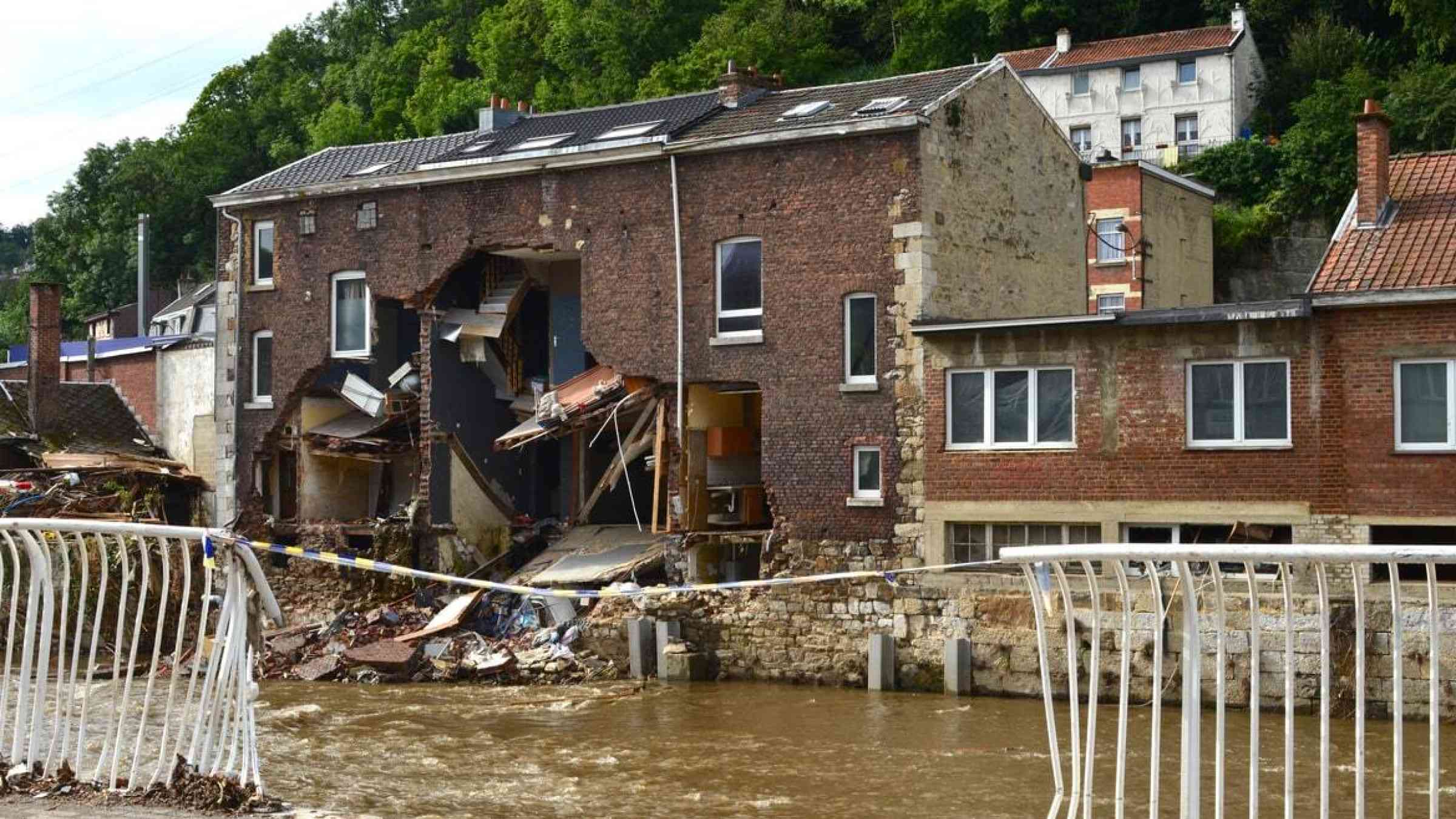New analysis indicates European cities and countries with highest expected losses from future flooding

Flooding - the most expensive natural hazard in Europe - is forecast to worsen in the future due to climatic and socio-economic changes.
This study provides a large-scale risk assessment of river-based flooding in Europe for the years 2025, 2055 and 2085 — to estimate flood losses to homes.
Floods affect more people globally than any other natural hazard. Fluvial flooding usually happens when a significant amount of rain falls over a long time, causing rivers to rise and overflow onto surrounding land. Climate change is expected to increase the amount and frequency of rainfall in the future, so flood losses and the number of people affected by river floods in Europe, will also rise. Societal changes have also led to more people living on floodplains over the last few decades, increasing the potential damages from river flooding. In 2002, the European Union Solidarity Fund was set up to aid Member States when natural disasters occur, as a response to severe flooding in Central Europe.
To enable better adaptation planning and improved flood-risk management, it is important to understand the drivers of risk under different climate, socioeconomic and private flood-precaution scenarios.
This study offers the first high-resolution assessment of future flood risk in Europe including changes across three key components: hazard, exposure and vulnerability. The model quantifies future flood risk in Europe, showing hotspots and trends where targeted interventions may be useful. Importantly, this evaluation includes resistance factors to flooding, such as precautionary measures taken by homeowners to ameliorate the risk of flood in their home — which are useful for considering in risk-mitigation strategies.
The researchers combined new data for hazard and flood protection standards with high-resolution exposure projections and aspects of vulnerability from open data sources. Data from 1995 on tangible losses due to flooding of residential housing stock in Europe were used as a baseline, from which future exposure could be calculated.
The influence of exposure change and climate scenarios on fluvial flood risk were analysed for three future dates: 2025, 2055 and 2085. The climate scenarios used were the Representative Concentration Pathways (RCP) 4.5 and 8.5 – greenhouse gas trajectories developed by the Intergovernmental Panel on Climate Change (IPCC). RCP 8.5 is the highest future concentration trajectory developed by the IPCC, whereas RCP 4.5 is more moderate – they both refer to concentrations in 2100. In 2025 the risk level is similar for the two pathways, whereas later on in the century the risk becomes more distinct, with loss doubling under RCP 8.5 between 2025 and 2055.
Scenarios with improved and neglected private precaution were also evaluated for their influence on flood risk, using the ‘BN-FLEMOps’ model (Bayesian Network Flood Loss Estimation Model for the private sector) to estimate fluvial flood losses for residential buildings in Europe. The researchers described flood risk for an area as accumulated direct tangible loss (in euros per time period), and event probability, as well as expected annual damage (EAD) in euros. The results of the flood-risk analysis – at the most detailed spatial scale available – found urban centres and their surrounding regions to be the hotspots of flood risk in Europe. The researchers found, when looking at flood risk EAD with structural flood defences in the baseline year, that Germany had the highest flood risk for residential buildings, followed by France, Italy and Spain in descending order. More specifically, Hamburg at the mouth of Elbe River, Paris at the confluence of Seine and Marne, Florence, Zaragoza, London, Geneva, Ghent, and Linz were the regions with the highest overall losses.
In contrast to this, the researchers suggested high levels of flood protection in northern Scotland (flooding protection of a 1 in 200 years probability level), and in the north of the Netherlands (flood protection ranges from a probability level of 1 in every 1 250 years (inland) – to 1 in 10 000 years on the coast), combined with moderate exposure, led to lower risk in these regions — with estimated losses of only €6.5 million per year in the Netherlands. Low expected annual damages, of under €1 million, were also projected by the model analysis for Estonia, Denmark, Bulgaria, Iceland and Cyprus. The researchers suggest that areas with lower risk are mostly remote and rural without major river systems, or have high flood-protection levels.
The analysis found that flood risk would increase in the British Isles and Central Europe throughout the 21st century, whilst risk in parts of Scandinavia and the Mediterranean would remain the same or decline. When looking at both exposure change and climate scenarios (RCP 4.5, RCP 8.5) together, river-based flood risk in Europe was estimated to increase seven-fold to €6.8 billion and ten-fold to €9.3 billion, respectively, to the end of this century (assuming current levels of precaution). Socio-economic changes are increasing the risk of flooding more than climate change. The researchers found that improved private precautionary measures in homes would reduce flood risk in Europe on an average by 15%, equating to a saving of €137 million, for the baseline period.
This study provides useful quantification of future flood risk in Europe by integrating climate, socio-economic and private precaution scenarios, offering a detailed overview of risk drivers, trends and hotspots. This large-scale assessment is valuable for multi-scale risk-based flood adaptation planning by policymakers and states within Europe, notably highlighting that private precaution measures can aid homeowners in mitigating flood losses.